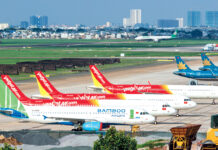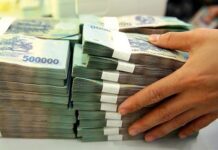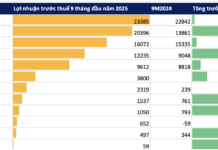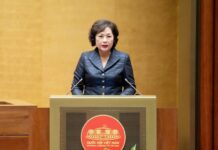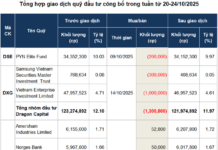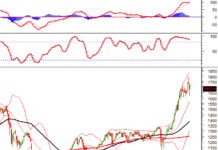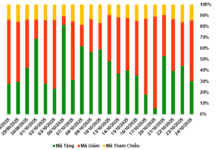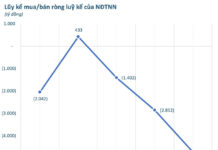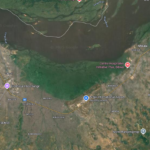Undeveloped focal economic sectors
Speaking at the appraisal session of the Hanoi Capital Planning 2021-2030 period, vision to 2050 organized by the Ministry of Planning and Investment on February 23, Minister of Planning and Investment Nguyen Chi Dung said that Hanoi Capital is the national political and administrative center, the largest center of the country in terms of economy, culture, science, education… is an important driving force for the development of the Red River Delta region and the whole country.
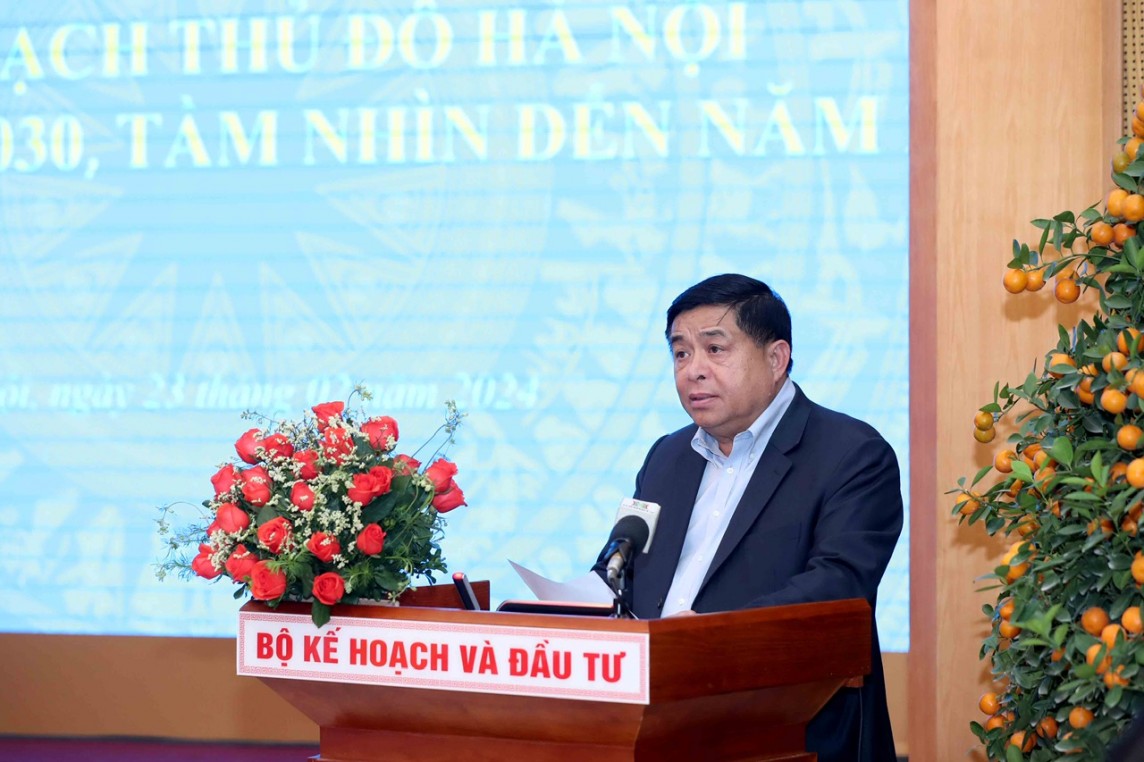
Minister Nguyen Chi Dung points out the difficulties, challenges, and “bottlenecks” that need to be addressed
Hanoi is also the second most populous city in the country with a high-quality young population, less affected by extreme weather conditions in the Red River Delta region; a convenient transportation hub for diverse transportation development and connection with provinces, cities in the Red River Delta region, northern provinces, the whole country, and internationally; a region with many cultural and historical heritages, the most diverse in the country.
However, alongside the advantages, Minister Nguyen Chi Dung also pointed out the difficulties, challenges, and “bottlenecks” of Hanoi that need to be resolved such as: Hanoi’s economic position tends to decrease compared to provinces and cities in the Red River Delta region. Specifically, in 2022, Hanoi’s GRDP accounted for 42.2% of the Red River Delta region, but the GRDP growth rate in 2023 only reached 6.27%, ranking 9th out of 11 in the Red River Delta region. Economic restructuring is slow, and the key economic sectors have not been clearly formed with high efficiency.
Hanoi still has many persisting issues in technical infrastructure and social infrastructure development such as transportation, electricity, energy, information, communication, supply and drainage, water, irrigation, education, training, healthcare, culture, society.
“The three major issues are traffic congestion, environmental pollution, and flooding. The transportation routes of the basic infrastructure system have not been developed systematically, especially the lack of north-south and east-west longitudinal axes. The construction of cultural and sports facilities is not synchronized, interconnected, and has not fully tapped into the potential,” said Minister Nguyen Chi Dung.
The connection between Hanoi and the Red River Delta provinces, especially the southern sub-regions, is not synchronous and not developed to the correct level. Hanoi has only developed 2 out of 8 planned central axes. Traffic congestion often occurs at the entrances to the capital. As a city without a beach, Hanoi faces limitations in competition for service and logistics development, affecting the openness of the economy.
Hanoi’s population scale has exceeded the forecast due to mechanical population growth, it is not feasible to relocate people from the inner city, creating great pressure on infrastructure and people’s quality of life. The terrain is divided by river systems; weak geological foundations pose challenges to the development of underground works, especially underground space development.
From these challenges, Minister Nguyen Chi Dung emphasized: “To develop strongly, Hanoi city needs to clearly identify its own potential, different and outstanding strengths; especially in the planning, there must be new approaches, new ways of thinking, expanding the development vision, and establishing a clear implementation roadmap. Development must have priorities and focal points; based on regional connectivity to create spreading effects to promote the economy and correspond to the position and growth potential of the region and the whole country.”
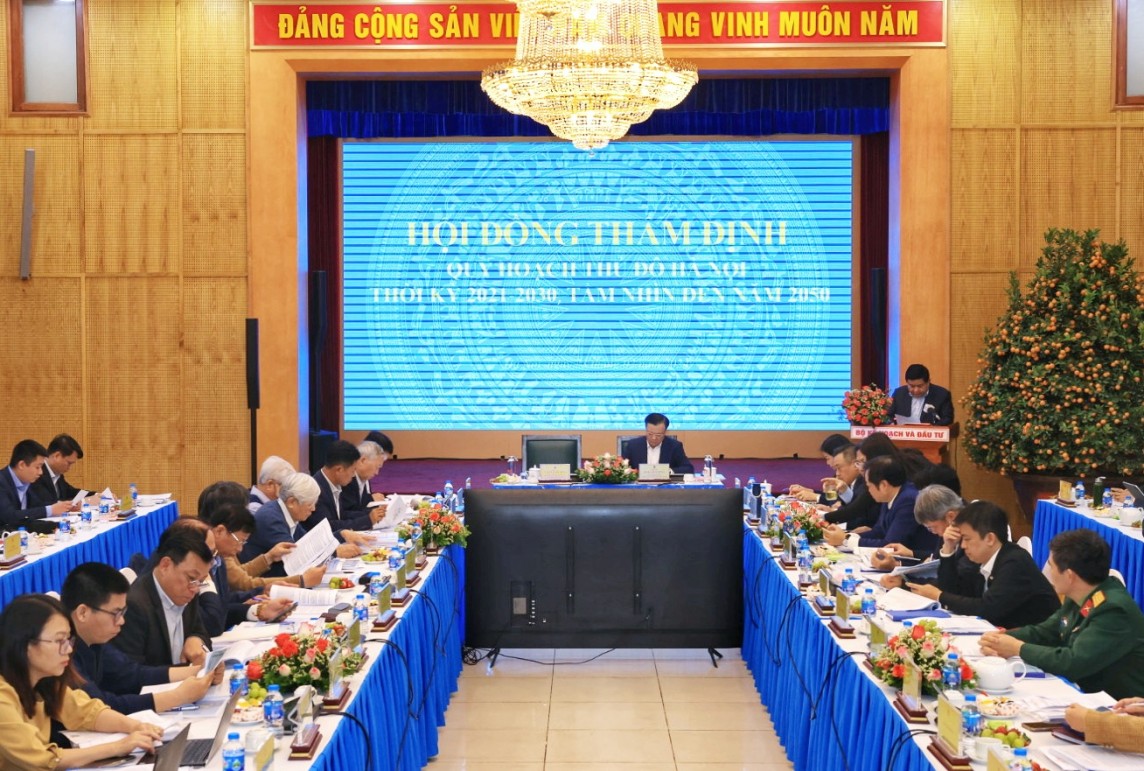
All 31 members of the Hanoi Planning Appraisal Council voted to approve the capital’s planning dossier
Identify priority sectors and fields
Based on the analysis above, to provide the highest quality planning for Hanoi city, Minister Nguyen Chi Dung suggested that the members, review experts of the Appraisal Council, and delegates focus on some factors. Including identifying priority economic sectors and orientations, development solutions for those sectors.
In this regard, leaders of the Ministry of Planning and Investment said that economic development does not need to focus on many sectors but focus on a number of sectors with outstanding, spreading factors, and strong impacts on the economy. For example, Beijing (China) focuses on developing finance, culture, and artificial intelligence (AI) technology; Bangkok (Thailand) focuses on their strengths in commerce, tourism, and healthcare…
Hanoi can focus on the chip manufacturing, semiconductor, and AI sectors that are currently global trends and have the potential of Hanoi.
“Or orientation towards developing sectors of green industrial production, digital economy, cultural industry, knowledge economy, circular economy, urban economy… are also strengths and advantages of Hanoi,” said Minister Nguyen Chi Dung, while at the same time suggested the Appraisal Council review the structure, development proportion of the industrial sector is still modest, accounting for about 24%, not creating motivation for Hanoi’s development; consider selecting key development sectors based on promoting strengths and practical suitability and towards corresponding with the capitals in surrounding countries, reaching international scale.
Representatives from the Ministry of Planning and Investment also proposed the Appraisal Council consider and give opinions on the orientation of Hanoi’s development space organization. Specifically, considering and giving opinions on: the 5 dynamic development axes, especially the Red River axis, with the direction of shifting Hanoi’s administrative agencies to the north of the Red River; The division and development of economic sub-regions are based on the connection, relationship according to the characteristics, topography, culture, and development nature of the territories; The encouraged development areas and restricted development areas; The growth poles play a central role.
The issue of further developing industrial production in the area belonging to the former Ha Tay province, creating conditions to accelerate urbanization in this area, reduce pressure on existing inner city districts…
| In the appraisal session of Hanoi Capital Planning for the 2021-2030 period, vision to 2050, all 31 members of the Hanoi Planning Appraisal Council voted to approve the capital’s planning dossier. Specifically, 4 votes agreed to approve without any amendments or supplements, accounting for 12.9% of the total votes; 27 votes agreed to approve with amendments and supplements, accounting for 87.1% of the total votes. |

